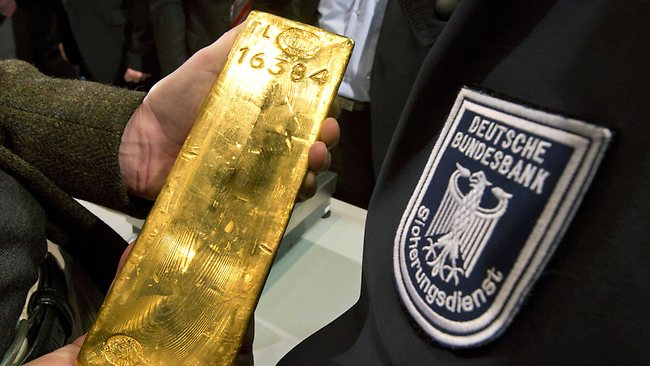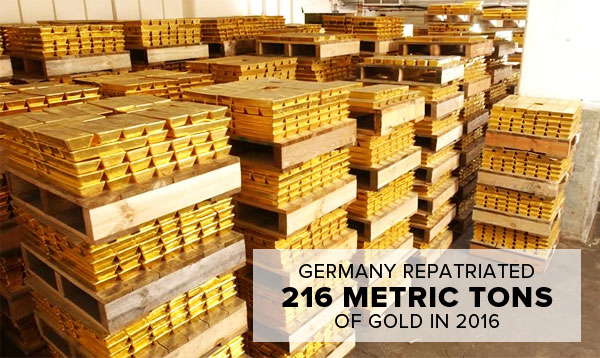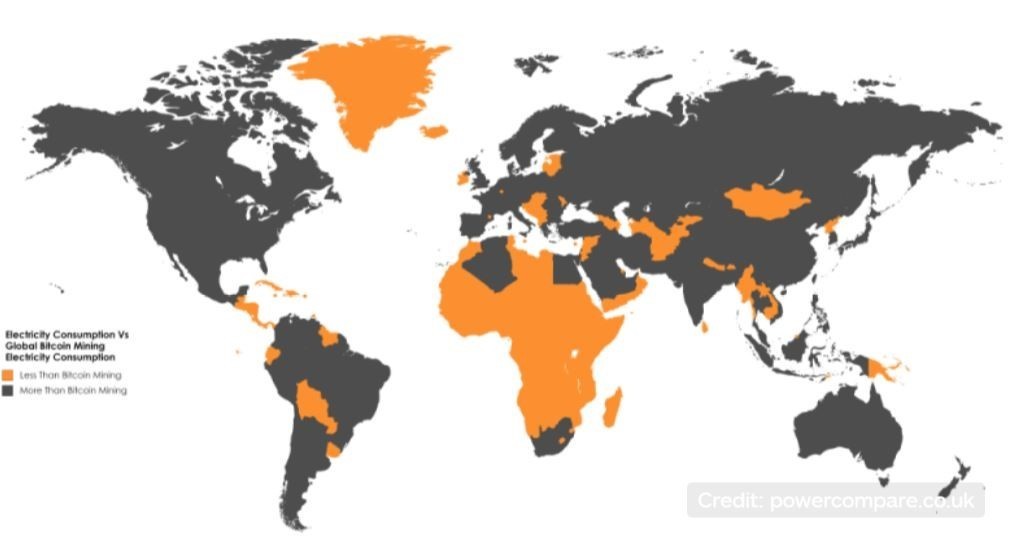– ‘Availability of gold strengthens public confidence in the central bank’s balance sheet’ say Bundesbank – Bundesbank has Audited Reserves amounting to almost 3,400 tonnes, around 68% of Bundesbank’s reserve assets – Bank taken series of steps to increase transparency around Germany’s gold holdings – Germany has second largest gold holdings in the world; U.S. believed to be largest – Transparency important and all central banks should follow the Bundesbank lead Editor: Mark O’Byrne - Click to enlarge Germany’s central bank serves as an example to central banks when it comes to respecting gold reserves and the public’s knowledge of them. The Bundesbank has worked incredibly hard in recent years to be
Topics:
Jan Skoyles considers the following as important: Daily Market Update, Featured, GoldCore, newsletter
This could be interesting, too:
Nachrichten Ticker - www.finanzen.ch writes Die Performance der Kryptowährungen in KW 9: Das hat sich bei Bitcoin, Ether & Co. getan
Nachrichten Ticker - www.finanzen.ch writes Wer verbirgt sich hinter der Ethereum-Technologie?
Martin Hartmann writes Eine Analyse nach den Lehren von Milton Friedman
Marc Chandler writes March 2025 Monthly
|
– ‘Availability of gold strengthens public confidence in the central bank’s balance sheet’ say Bundesbank Editor: Mark O’Byrne |
|
| Germany’s central bank serves as an example to central banks when it comes to respecting gold reserves and the public’s knowledge of them. The Bundesbank has worked incredibly hard in recent years to be transparent in regard to its gold bullion reserves.
The latest edition of Gold Investor from the World Gold Council has a very interesting article written by Carl-Ludwig Thiele, Member of the executive board of the Bundesbank which we bring to you below. In it Thiele outlines the reasoning of the Bundesbank to be open and transparent about the 3,373.6 tonnes of gold that represents nearly 70% of the country’s reserves. There are two significant lessons to be learnt here – one for central banks and one for individual investors. The first is, central banks should be aware of the benefits of gold and how transparency will boost the public’s confidence. The second is investors should understand why the Bundesbank is so interested in protecting its gold bullion. Gold cannot be devalued as the euro, dollar, sterling and all fiat currencies are being and will be. It cannot be confiscated a la deposits in bank bail-ins and it is extremely difficult to confiscate gold coins and bars if owned in allocated and segregated storage in safe vaults in the safest jurisdictions in the world. It is a borderless money that acts as the ultimate reserve and safe haven in a diversified portfolio. From Gold Investor:
|
|
| As a first step, the responsible Executive Board member broke with established practice and, in the autumn of 2012, disclosed the exact volumes of gold held at each storage location. That was when the Board opted to relocate a substantial proportion of this gold to Germany. The public was informed of this decision at a press conference on 16 January 2013. A number of gold bars were on display, several of the Bank’s verification processes were demonstrated and the Bundesbank announced that it would start to relocate 674 tonnes of gold, held in vaults at the Federal Reserve Bank in New York and the Banque de France in Paris. By 2020 at the latest, just over 50% of Germany’s gold reserves were to be stored in Frankfurt.
The decision to transfer the gold was prompted by a number of factors: a desire to increase confidence among the German public; changes in geopolitical circumstances – such as the fall of the Iron Curtain – and the fact that the Bundesbank had available storage capacity in Frankfurt. In this context, it is important to note that, up until 1997, the Bundesbank stored only 77 tonnes of gold in Frankfurt. In a second step towards increasing transparency, at the beginning of 2014, the public was informed of the previous year’s transfers and, in February 2017, we announced that the transfer of gold from the Federal Reserve Bank in New York had been successfully completed. Six months later, we revealed that the transfers from the Banque de France in Paris had been completed too. At press conferences held to unveil these developments, journalists were given an up-close look at some of the gold bars that had been brought to Frankfurt from both New York and Paris. In a third step towards increasing transparency, the Bundesbank Executive Board commissioned a film on the transfer and storage of Germany’s gold, released in 2015. As another milestone and a global first, an additional fourth step towards increasing transparency was taken with the publication of a list of all German gold bars, totalling around 270,000 in number. The Bundesbank has now published this roughly 2,400-page list three times since October 2015, even though it involved a series of significant challenges. There is no ‘blueprint’ for inventory lists of gold holdings and, in 2015, virtually no central bank in the world had ever released such a list. “The devil is in the detail” – as they say – and we had to focus painstakingly on the detail to draw up the gold bar inventory list. During this time-consuming process, one thing became clear: rules are very helpful in making transparency a reality. The London Bullion Market Association (LBMA) offers an appropriate set of rules. Elsewhere however, there is little consistency. Even though various online gold forums claim that there is a ‘standard’ for gold bar inventory lists, determined by the LBMA, this only relates to commercial weight lists for gold deliveries to storage facilities in London. |
|
| Looking back, the transparency campaign has taught us a number of useful lessons.
First, the availability of reserve assets like gold strengthens public confidence in the stability of a central bank’s balance sheet. As at 31 December 2016, gold holdings made up around 68% of the Bundesbank’s reserve assets. This has a significant impact on public perception so it is essential that we constantly maintain and develop a relationship of trust with the general public. This was and continues to be the primary goal of our transparency campaign. However, making transparency a reality requires both time and human resources. Over the past five years, our dialogue with both the general public and policymakers on the topic of the Bank’s gold reserves has intensified considerably. Experts, politicians and citizens increasingly appreciate our openness around Germany’s gold reserves but it takes time to answer everyone’s questions, however legitimate they are. In the Money Museum, which reopened at the end of 2016, the Bank also offers visitors the opportunity to handle a gold bar for themselves. This gold bar (400 oz) is no larger than a one-litre carton of milk, but weighs roughly 12.5kg and is worth more than €400,000. There is one question that we cannot answer, even though it has been asked time and again: what routes and means of transport were used for the gold transfers? In this matter, as in cash transport, the security of staff and assets always takes precedence over the need for information and transparency. For this reason, the Bundesbank has consistently refused to answer any such questions, and will continue to do so in the future. Ultimately, it is evident that central banks, with their more ‘sober’ attitude towards gold, can help to rationalise the discussion about gold. But we can do this most effectively by reinforcing our position as trusted authorities towards the general public – and that is best achieved by taking appropriate steps towards increased transparency. ‘Transparency – at least as valuable as gold’. Gold Investor, December 2017 |
Tags: Daily Market Update,Featured,newsletter




